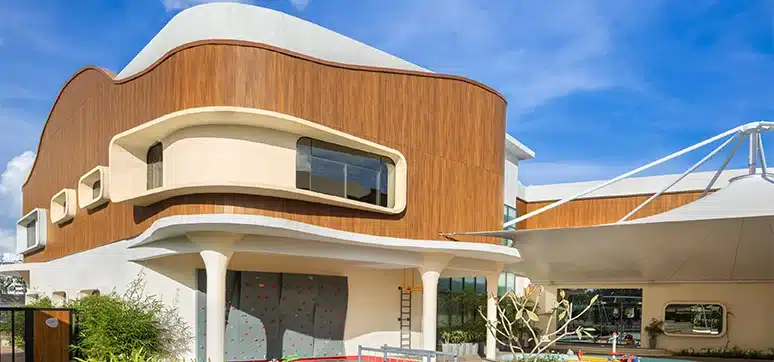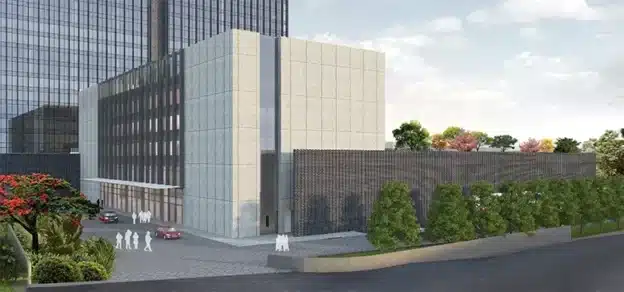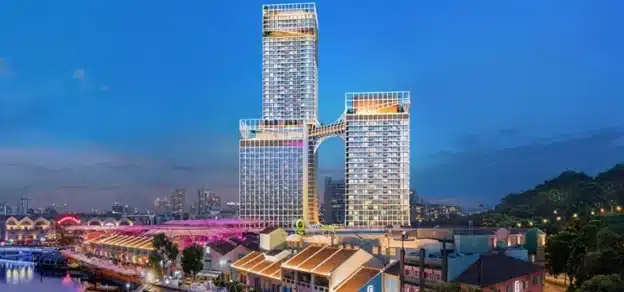According to a study done by Global Alliance for Buildings and Construction, currently, buildings account for more than one-quarter of the total greenhouse gas emissions (GHGs). If we are to mitigate the effects of having more buildings on the environment, green construction is the answer and material selection plays a major role here. Cladding is an element that is generally reserved for the last during the material selection process. We forget that it’s the first line of defence of a structure. New-age materials are fast replacing the conventional masonry-based cladding. But some of these materials are so ubiquitous that there is a dearth of freshness in the buildings we see daily.
Double Skin Facade Sun Shading System:
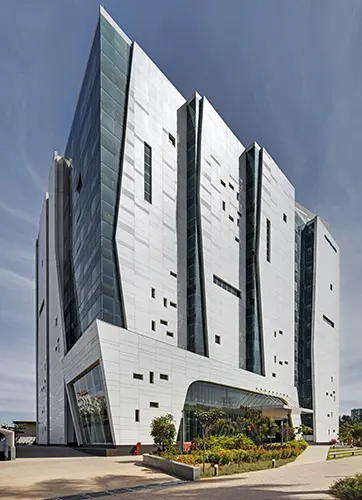
The double-skin facade is a system of a building consisting of two skins placed in such a way that air flows in the intermediate cavity. The ventilation of the cavity can be natural. Apart from the type of ventilation inside the cavity, the origin and destination of the air can differ depending mostly on climatic conditions and the use and the location of the building and the HVAC strategy. The cavity between the two skins may be either naturally or mechanically ventilated. In cold climates, the solar gain within the cavity may be circulated to the occupied space to offset heating requirements, while in hot climates the cavity may be vented out of the building to mitigate solar gain and decrease the cooling load.
In each case, the assumption is that a higher insulation value may be achieved by using this glazing configuration over a conventional glazing configuration. Recent studies showed that the energy performance of a building connected to a double-skin facade can be improved both in the cold and the warm seasons and in cold and warm climates by optimising the ventilation strategy of the façade.
Sustainability
There is no doubt that sustainability has become the buzzword for any building’s façade system. To influence this trend, a rain screen façade system improves building protection by enhancing the functionality of the façade with respect to heat and noise reduction and better weather protection. We can increase the thermal efficiency of the building with an effective design. A well-designed façade reduces the thermal bridges, condensation of water vapour, protects the building and increases sustainability.
Tropical climate can sometimes be uncomfortable and therefore it is important to use the right façade system for optimizing temperature levels inside a building. The primary objective is to keep the heat at bay. The revolutionary rear ventilated façade system maintains a gap between the building envelope and cladding, and between cladding elements. This ensures there is a sufficient flow of air behind the cladding.
In other words, when the building gets heated, the hot air between the cladding and building envelope rises to the top and escapes, and cold air from the bottom flows in to occupy its space. This way there is continuous air movement and the building can sustain a comfortable temperature. It helps in reducing power consumption air circulation and improves the thermal comfort of the occupants. This unique and innovative façade system is a sustainable model and is compliant with green building technologies.
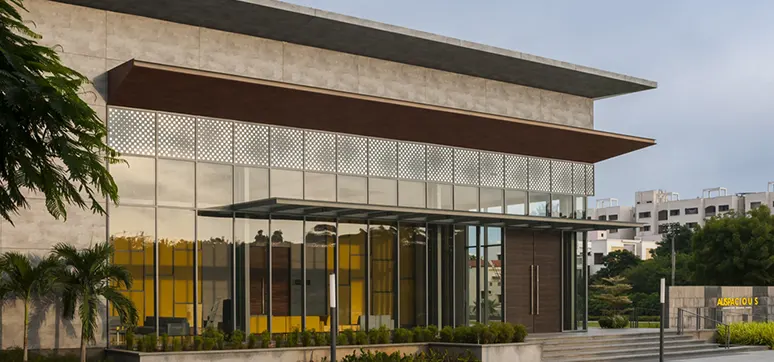
Understanding Environment-Friendliness
Environment friendly is a subjective term that encompasses the entire product life cycle. The material should be from sustainable sources and should not have any adverse effects on the environment due to the mining of its raw materials. It should not release harmful gases during its use and at the end of its useful period, it should be disposable without any harmful or long-lasting effects on the environment. The products (like those of Fundermax) are derived from paper, which is taken from sustainably managed forests that are FSC or PEFC certified.
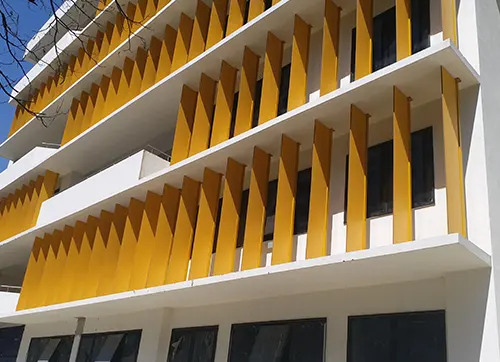
There are no harmful VOCs that are released from the panels during their use, thus making them perfect for use as interiors also. Proper choice of reflectance properties also ensures that the heat-island effect is mitigated in the areas surrounding the building. It is a minimum maintenance material and hence requires less water for cleaning. This reduces the strain on water bodies around us.
Besides Offering Protection, What are the Other Benefits/Advantages of Cladding?
It helps in improving the thermal comfort of the occupants by ensuring continuous air movement in the gap between the building envelope and wall. In the rear ventilated exterior cladding system, there is a sufficient flow of air behind the cladding. Functional cladding protects the building from rain and avoids seepage of water into the building walls.
When rainwater seeps in through the gaps between cladding elements, the constant flow of air behind the cladding helps in the quick drying of the water before it reaches the building envelope. Rear-ventilated facades are amongst the most popular facade systems today. In addition to their functional safety, architects chiefly value the design possibilities provided by the use of rear-ventilated facades. The design can be individually harmonised with the characteristics of the building. Material combinations of various other cladding materials can also be easily implemented with rear-ventilated façade systems.
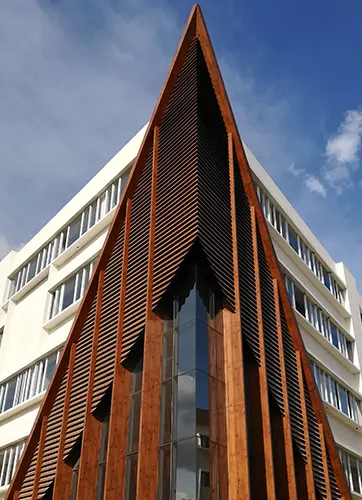
Other technological advantages of rear-ventilated facade systems include the structural division of insulation and weather protection materials. These systems are thus less susceptible to damage than other facade systems. In addition, fire, noise and lightning protection requirements can be implemented easily and creatively.
Advantages of Rain Screen Facades:
- Ventilated rain screen facades provide lasting protection against the condensation of water and rain.
- In terms of building physics, the ventilated rain screen facades are a tried-and-tested type of construction for ensuring a pleasing indoor climate.
- Ventilated rain screen facades result in a considerable reduction in energy costs for heating and air-conditioning.
Ventilated rain screen facades are extremely robust, have a long useful life, require no maintenance and, in economic terms, are an extremely advantageous solution for increasing the value of a building.
CONCLUSION
Façade materials and systems are expected to carry out a number of functions and perform in a variety of ways, such as structural integrity, durability, weather- resistance, acoustic insulation, thermal insulation, safety and security barriers, and more. A thorough assessment of the durability of the new materials proposed needs to be done to ensure that the materials used do not compromise the performance requirements of the building.
